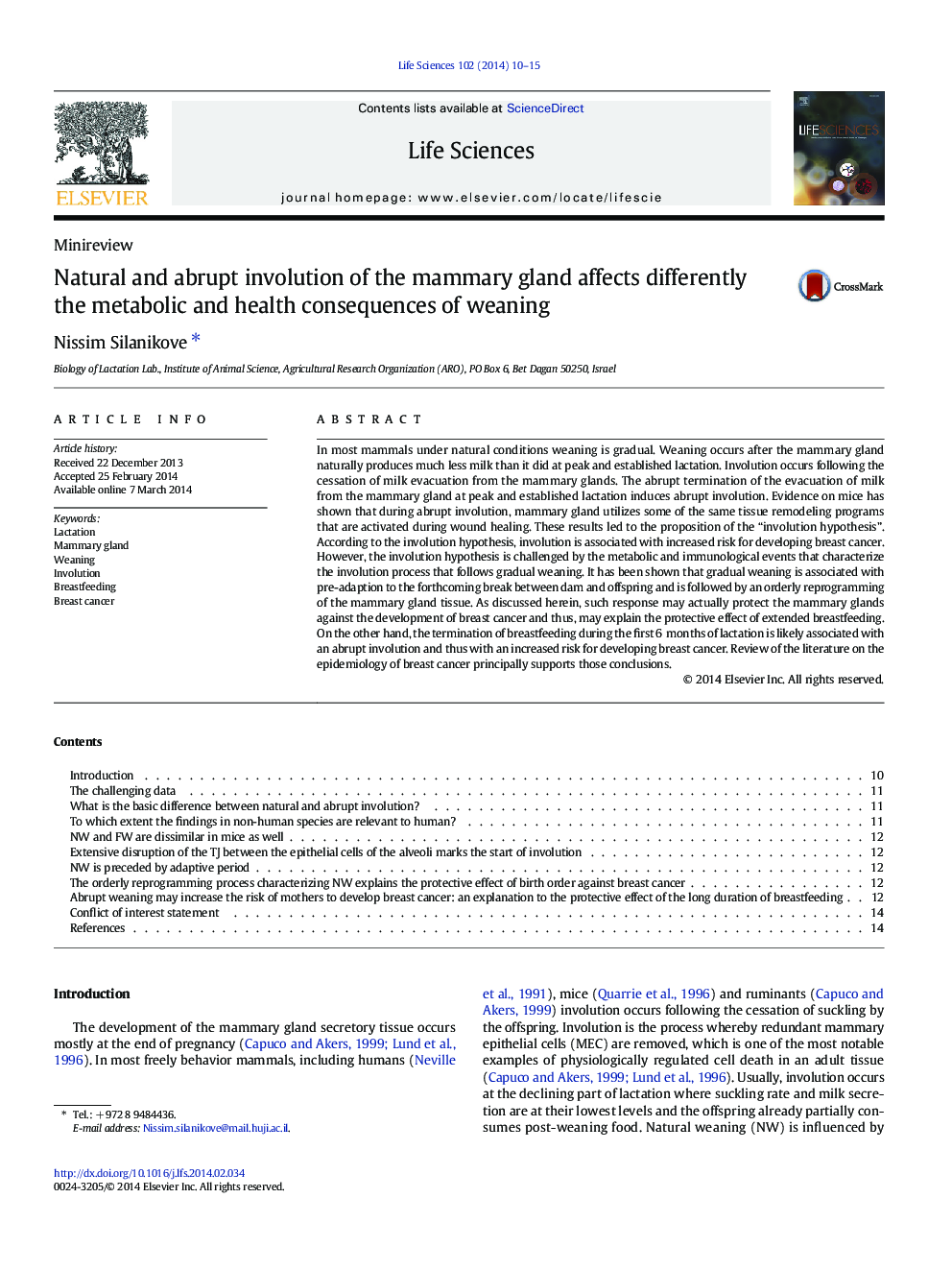| کد مقاله | کد نشریه | سال انتشار | مقاله انگلیسی | نسخه تمام متن |
|---|---|---|---|---|
| 2551199 | 1124706 | 2014 | 6 صفحه PDF | دانلود رایگان |
In most mammals under natural conditions weaning is gradual. Weaning occurs after the mammary gland naturally produces much less milk than it did at peak and established lactation. Involution occurs following the cessation of milk evacuation from the mammary glands. The abrupt termination of the evacuation of milk from the mammary gland at peak and established lactation induces abrupt involution. Evidence on mice has shown that during abrupt involution, mammary gland utilizes some of the same tissue remodeling programs that are activated during wound healing. These results led to the proposition of the “involution hypothesis”. According to the involution hypothesis, involution is associated with increased risk for developing breast cancer. However, the involution hypothesis is challenged by the metabolic and immunological events that characterize the involution process that follows gradual weaning. It has been shown that gradual weaning is associated with pre-adaption to the forthcoming break between dam and offspring and is followed by an orderly reprogramming of the mammary gland tissue. As discussed herein, such response may actually protect the mammary glands against the development of breast cancer and thus, may explain the protective effect of extended breastfeeding. On the other hand, the termination of breastfeeding during the first 6 months of lactation is likely associated with an abrupt involution and thus with an increased risk for developing breast cancer. Review of the literature on the epidemiology of breast cancer principally supports those conclusions.
Journal: Life Sciences - Volume 102, Issue 1, 25 April 2014, Pages 10–15
